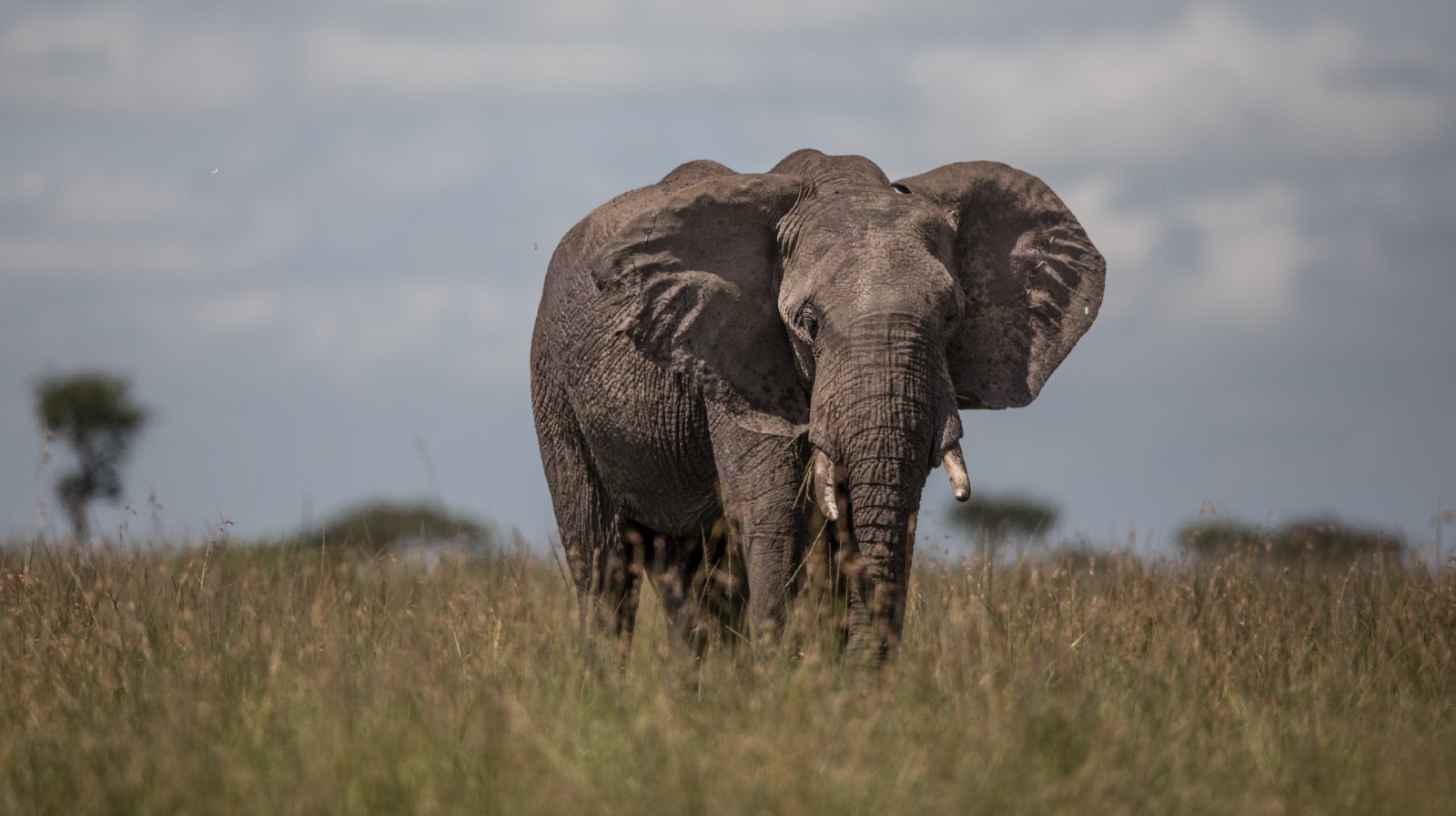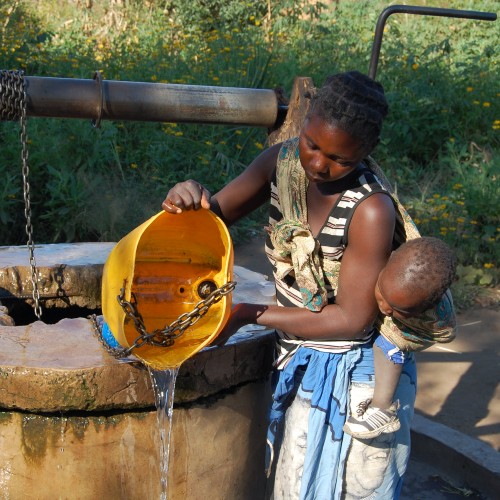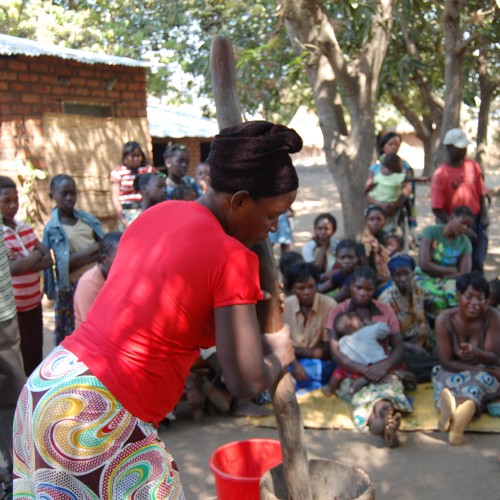Why we need to move beyond trophy hunting
29 October 2022
WHY WE NEED TO MOVE BEYOND TROPHY HUNTING
Born Free’s Head of Policy, Dr Mark Jones, explains why it’s time to find viable alternatives to trophy hunting, which protect wildlife AND communities alike.


Dr Mark Jones
The world’s wildlife is in crisis. At least a million species are at risk of extinction, including iconic animals such as elephants, giraffes, rhinos, lions and leopards. These and many other species have something else in common beyond their threatened status – they are firmly in the sights of trophy hunters.
Every year, hundreds of thousands of animals are victims of trophy hunting. Between 2011-2020, upwards of 300,000 trophies derived from more than 300 protected species were exported from 112 countries.
These figures only reflect those trophies derived from species that are protected by international agreement, and for which cross-border trade is monitored. When you add species that don’t enjoy legal protected, and those killed by hunters in their own country, these numbers represent the tip of a very large iceberg.
Hunting proponents claim their activities are well-regulated through international agreements, national rules and evidence-based quotas. They claim to offer a service by managing wild animal populations, removing problem or redundant animals, and providing meat for local people. They claim that the money generated provides essential funds for wildlife conservation and local communities in areas where trophy hunting takes place.
But their claims simply don’t withstand scrutiny.
Modern trophy hunting is a cruel relic of the colonial era designed to generate profits for a chosen few. Studies and reports increasingly question the economic, conservation and societal values of trophy hunting, and its sustainability. Far from being well-regulated, animal populations are often manipulated, quotas are set to maximise profits, recommended age-based and area-based limitations are frequently ignored, and hunting levels often exceed quotas. As a result, the wildlife in many trophy hunting areas in countries such as Zambia and Tanzania has become severely depleted.
Despite their claims, trophy hunters do not typically target problem, redundant or old and infirm animals, preferring to set their sights on animals with impressive traits – the darkest manes, the biggest tusks, the longest horns – that make the best trophies. This results in the killing of key individuals, removing vital genetic resources, skewing gender ratios and causing disruption to family groups, populations and, by extension, the wider biodiversity of which they form a vital part.
Trophy hunters value rarity and are often prepared to pay more, in some cases a great deal more, to hunt rare animals. As a result the most vulnerable species may be disproportionately targeted, increasing the pressure on already threatened populations and potentially pushing them towards localised extinction.
Trophy hunting agents and outfitters often sell ‘packages’ which include the preferred target animal (such as one of the so-called ‘Big Five’ African species), but also several other animals from ‘lesser’ target species, often prey species such as antelope, zebra or ostrich. The targeting of prey species, some of which may not enjoy national or international protection or be subject to strict quotas, can skew populations and affect predator-prey relationships.
 The trophy hunting industry has also been implicated in the trafficking of wildlife through so-called ‘pseudo-hunting’, with trophy hunts being used as a front to facilitate the acquisition and export of valuable parts of protected animals for illegal commercial trade, including rhino horn. In January 2018 the incoming Environment Minister of Tanzania accused hunting operators of being involved in poaching and illegal exports of ivory. Such associations further undermine the credibility of the trophy hunting industry’s conservation claims, and place vulnerable wildlife populations at increased risk.
The trophy hunting industry has also been implicated in the trafficking of wildlife through so-called ‘pseudo-hunting’, with trophy hunts being used as a front to facilitate the acquisition and export of valuable parts of protected animals for illegal commercial trade, including rhino horn. In January 2018 the incoming Environment Minister of Tanzania accused hunting operators of being involved in poaching and illegal exports of ivory. Such associations further undermine the credibility of the trophy hunting industry’s conservation claims, and place vulnerable wildlife populations at increased risk.
Trophy hunting is also cruel. Hunters may not be expert shots, and often use methods such as bows, muzzle loaders or handguns that are clearly not designed to achieve a quick kill. As a result, target animals are often wounded and suffer prolonged, painful deaths. In most circumstances where animals are deliberately killed, legislation and convention dictate that the method used should be designed to minimise suffering. Victims of trophy hunts do not enjoy these protections.
Far from incentivising wildlife conservation or lifting people out of poverty, trophy hunting operations generate only a tiny proportion of wildlife tourism income. Research suggests that little, if any, of the money hunters pay to make their kills ever filters down to local communities, with the bulk of the revenue ending up in the hands of hunting concession operators, officials, and foreign companies.
The industry fosters a culture of dependence among many local communities on meagre handouts from hunting operators.
Selling wild animals off to wealthy, predominantly foreign trophy hunters so they can be killed, shipped, stuffed and displayed in a cabinet or on a wall, is not an effective or sustainable way of funding wildlife protection or lifting people out of poverty.
 By contrast, animals that are allowed to live their lives in healthy wildlife habitats provide enormous value to communities and economies. They contribute to ‘ecosystems services’ such as the sequestration of carbon, the value of which could be realised using carbon markets – research suggest that the carbon sequestration value of individual forest elephants can be measured in millions of dollars. They also offer non-destructive ecotourism opportunities, which generate far more income and provide many more jobs than trophy hunting can ever do.
By contrast, animals that are allowed to live their lives in healthy wildlife habitats provide enormous value to communities and economies. They contribute to ‘ecosystems services’ such as the sequestration of carbon, the value of which could be realised using carbon markets – research suggest that the carbon sequestration value of individual forest elephants can be measured in millions of dollars. They also offer non-destructive ecotourism opportunities, which generate far more income and provide many more jobs than trophy hunting can ever do.
If we are to halt and reverse nature’s decline, protect ecosystems and the services they provide, and reduce the risk of future pandemics such as Covid-19, we need to transform our relationship with wild animals. We need to develop humane and progressive methods of financing both wildlife protection and local community development, through both international and national mechanisms involving governments, financing organisations, non-government organisations and the private sector, which are so often currently blocked by the presence of commercial trophy hunting interests. We need to break the cycle of local community dependence on trophy hunting operations.
The cruel, damaging and completely unnecessary killing of wild animals by trophy hunters must end. Society needs to look beyond trophy hunting, towards innovative ways of securing nature’s recovery and fostering a culture of human-wildlife coexistence, for the benefit of both.
